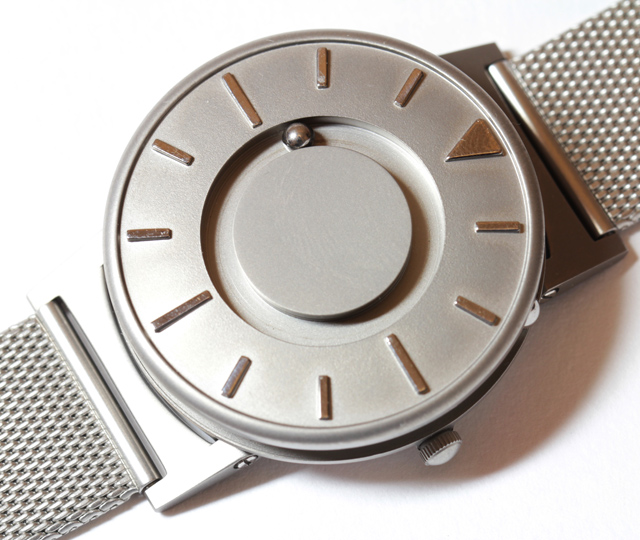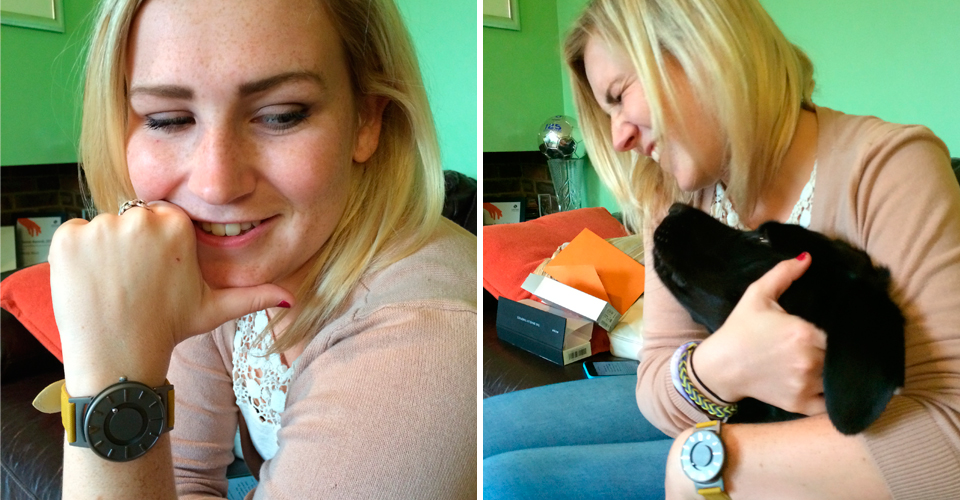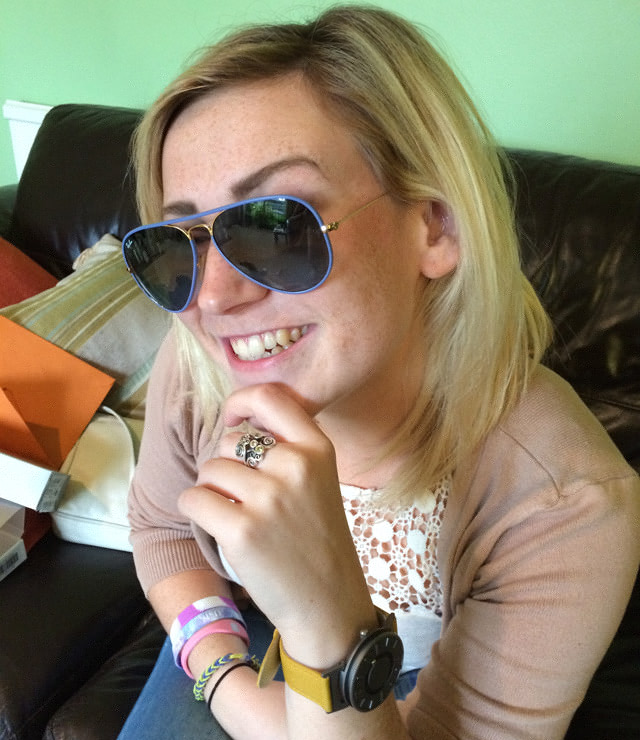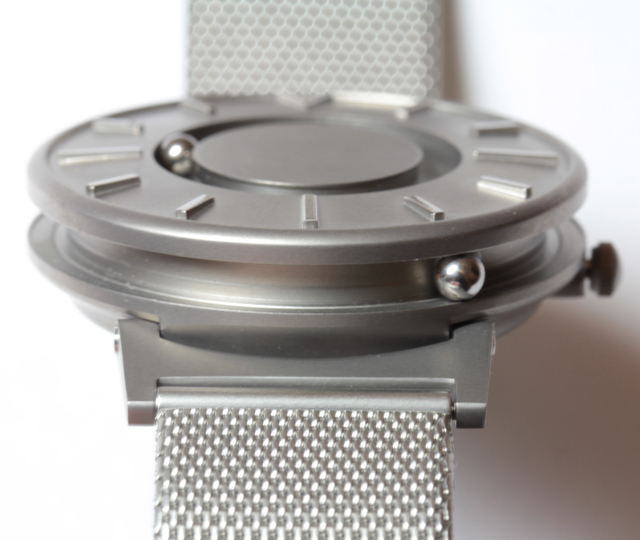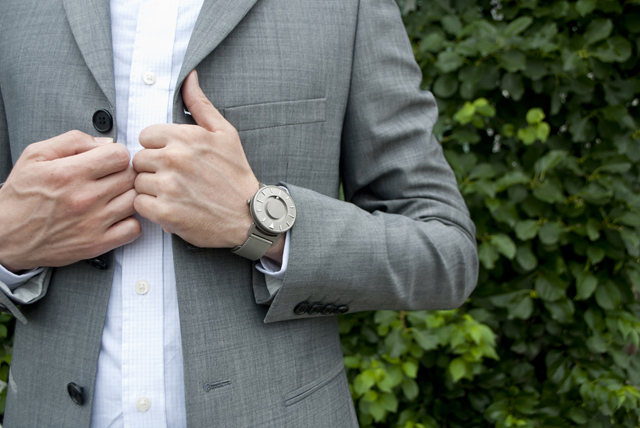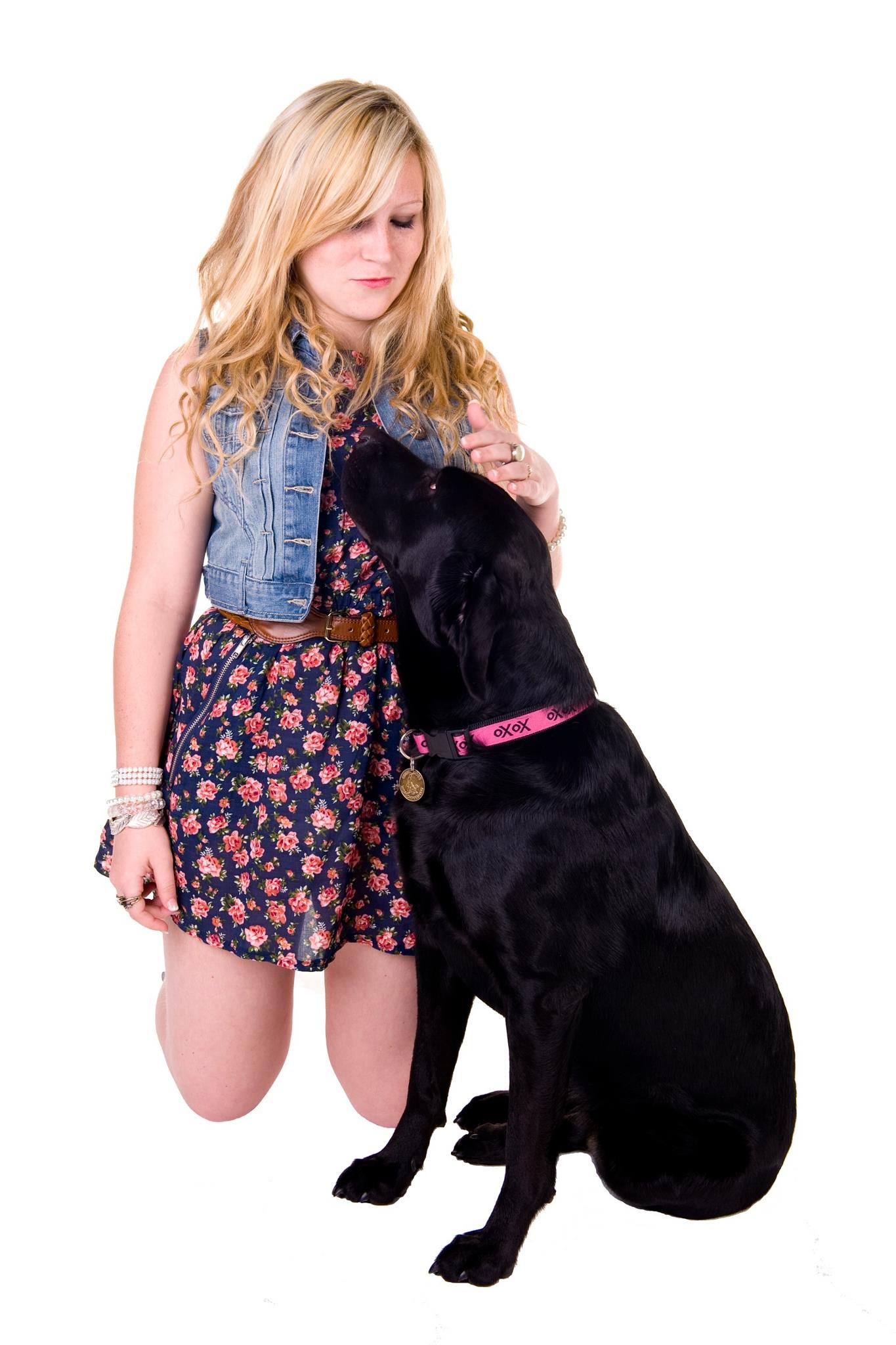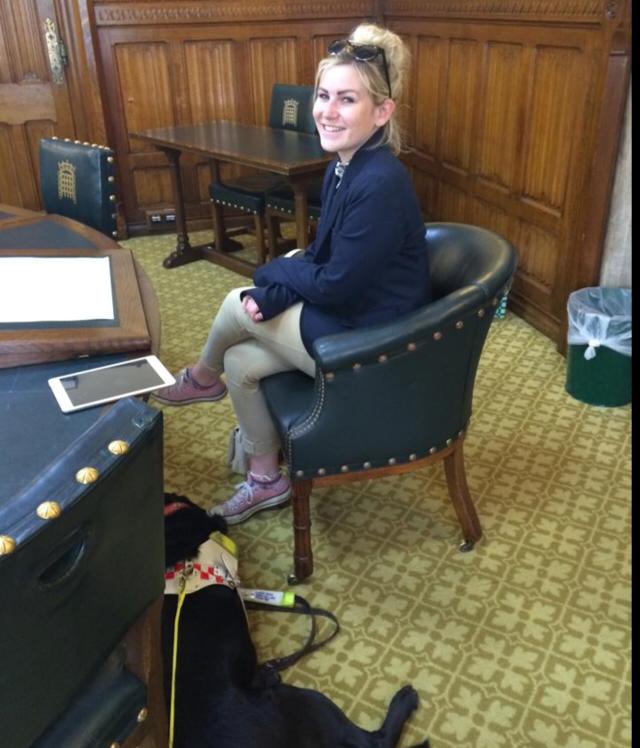My Apple Watch after 5 days!
Author: Molly Watt (Original post)
Having known about the Apple Watch for some time and knowing lots of my friends were planning to buy one, I was sceptical as my needs are quite different to that of those of the sighted and hearing.
I have to rely on specific accessible features.
However, I was curious as Apple products have been more than just up market gadgets to me, they really have been my access to the many things most take for granted but that those of us with deafblindness, particularly struggle with.
I was born deaf and registered blind when I was 14. The condition I have is Usher Syndrome Type 2a. I am severely deaf and have only a very small tunnel of vision in my right eye now so I was concerned not just about the face size but how busy it would appear to me and also if there would be an uncomfortable glare.
Curiosity got the better of me so I ordered one but I wasn’t excited, so not disappointed when informed I would not receive mine until mid June!
I should explain that I wear two digital hearing aids and communicate orally – not everybody with usher syndrome communicates orally and there are not two people with the condition the same, but there are similarities.
I had been wearing a Bradley Timepiece since last summer and love both the retro look and the practicality of a completely tactile watch brilliant and stylish, quite a rarity when it comes to anything designed specifically for people with disabilities.
I can read the time by touch completely independently with my Bradley and I still love it.
I decided to order the Apple Watch Sport 42mm (the bigger face size) with white strap so I’d not lose it quite so easily.
The white strap, silver casing and black face would be a workable contrast for me.
I was surprised to receive an email the day before launch date to say my Apple Watch had been dispatched and you guessed it “I was excited!”
I was delighted when the long white box arrived on Friday morning as I was heading into London that afternoon.
My first impression on opening the box was it was nice to hold, smooth rounded edges and the face size felt right on my wrist.
The watch strap on the “Sport” felt nice and was easy to fasten by touch alone.
The Apple Watch App had appeared automatically on the iPhone some time ago and it certainly made the set up “pairing” of the Watch simple, literally took a photo of the Watch face on my iPhone and that was that.
I am already very familiar with the iPhone settings so fiddling around with the Apple Watch App was easy. I was able to adjust, fiddle and play with a few settings.
It was great the Apple Watch App to exactly what I need “Accessibility Features”
Black background with white writing, I personally prefer this as white background gives off a glare that is even more blinding to me and actually hurts my eyes.
Whilst this works for me, I do prefer the colours and contrasts on my own website as they are less harsh on the eye.
The default settings I have on my iPhone are set to large text and I was pleased to be able to have this on my Apple Watch. I also use Zoom large text set to the largest.
The new setting “Prominent Haptic” is perhaps my favourite in accessibility.
On putting the Apple Watch on my wrist although on my small wrist it appeared large, it felt light and comfortable.
After a little playing I discovered by holding down the face of the watch you can vary how the time is displayed, a standard clock face but typically Apple quirky or large numbers and digital.
For me personally the ‘home screen’, even with the bigger of the two watch face sizes is small to see and sometimes a little tricky to select certain apps. However, through the Apple Watch App on the iPhone most things can be set up.
It is possible to change your ‘Glances’ (shortcuts) by swiping upwards.
I chose the weather, my calendar, my activity board, my music and my location.
I have found this facility very useful and has made accessing the watch very quick and easy.
On the same day I got my watch Mum received hers too. This benefitted the trial use of communication between us. Just by selecting the button underneath the digital crown, you reach your favourite contacts.
To contact any of my favourites, which are already selected on my iPhone, is incredibly easy. Either speak into the Apple Watch or just sending an ‘emoji’ is also very easy. The speech to text is very impressive.
I personally would not chose to read long emails or text messages on my watch, so although I want to be alerted via the Prominent Haptic setting I can choose when and how to access them that suits me best.
Before getting my Apple Watch I would have my phone either in my hand or a pocket nearest to my hand I would rarely feel the vibration from my iPhone and often missed messages. With the Apple Watch on my wrist, I am being notified via Prominent Haptics without issue and I really like that.
Another important safety point is the Apple Watch is very secure on my wrist so far less likely than an iPhone to be swiped from me.
I am fortunate to have a few friends who also have the Apple Watch and together have devised ways of communicating in ‘Code’ when out, particularly when out at night and in dark situations when I am completely blind.
Useful codes in the event I need help of any kind, for instance if I am in a badly lit and noisy environment and struggling to be included in something I can get message to friend I’m uncomfortable or I need assistance or help of some kind or “I’m bored” can we do something else!
For instance I can communicate using my Apple Watch screen using a small sketch, a “tap” or even send my heartbeat, each can be sent to another person with an Apple Watch and appears as a distraction, a vibration on the wrist and immediately I look to the watch.
Mum has certainly found benefit in the ‘tap’ for getting my attention when I am in my bedroom without my hearing aids on, I feel the nudge to get a move on or she wants my attention for something.
There is a vibration when a text message is received too – Prominent Haptics is definitely awesome for me as a deafblind person.
So far for me the most useful App on the Apple Watch is Maps – on my iPhone I can plan my journey from one destination to another, for me it will be on foot with Unis my guidedog.
This is where Haptics really come into its own – I can be directed without hearing or sight, but by a series of taps via the watch onto my wrist – 12 taps means turn right at the junction or 3 pairs of 2 taps means turn left, I’m still experimenting with this but so far very impressed – usher syndrome accessible!
I have not reached the stage yet where I am fully reliant on Voice Over, though I have tried it. It is fairly good for navigating the watch. If at home, the Voice over is great, though if like me you are dual sensory impaired, it would be a real struggle to hear outside or in public. Though I have been told with Bluetooth hearing aids, there could be a solution.
These are my early findings and I’m now sure there will be much more for those like me who need to rely on technology.
The positives far outweigh the negatives for me personally. The audio could be louder and the price more accessible for those with sensory impairment and reliant on the sort of accessibility features Apple offer.
I am now very happy to own an Apple Watch and look forward to making it work well for me.
I will blog again in a few weeks when I’ve had time to use it more but so far very happy with it.
Reproduced with kind permission of the author


